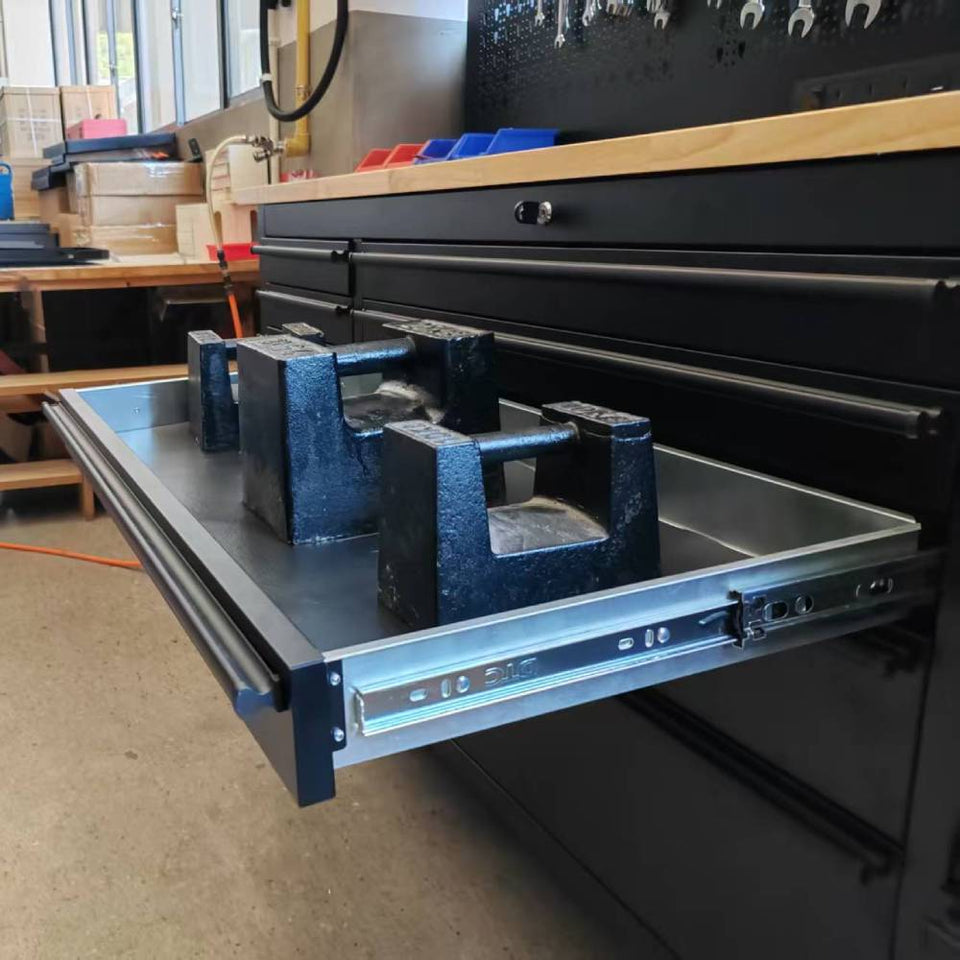Managing Weight in Tool Chest Drawers: Best Practices for Long-Term Performance
Tool chests are the backbone of any organized garage or workshop. But even the toughest steel drawers are only as reliable as the sliders that support them. Check your slider weight limits, if drawer slides are rated to 99 lbs, it's critical to manage weight distribution and usage habits to ensure long-term durability—not just for the sliders, but for the entire chest.
⚙️ Understanding the Rating
Drawer slides rated to 99 lbs are typically ball-bearing full-extension slides, engineered for smooth operation under moderate loads. However, this rating reflects static load capacity—not dynamic stress from slamming, vibration, or uneven weight distribution.
Key takeaway: 99 lbs is the maximum safe load, not the recommended daily operating weight.
✅ Best Practices for Weight Management
To extend the life of your tool chest and its sliders, consider these proven strategies:
1. Target 70–80% of Rated Capacity
- Recommended drawer load: 70–80 lbs max
- This buffer accounts for dynamic forces and reduces wear on bearings and tracks.
2. Distribute Weight Evenly
- Place heavier tools toward the center and rear of the drawer.
- Avoid clustering weight on one side, which can cause misalignment or premature slide failure.
3. Use Heavier Drawers for Bulk Storage
- Reserve bottom drawers for heavier items like impact wrenches, battery packs, or vises.
- Top drawers should hold lighter tools—screwdrivers, pliers, bits—to reduce tipping risk.
4. Avoid Slamming or Overextension
- Teach users to close drawers gently and evenly.
- Avoid yanking them open past their full extension.
- Slamming accelerates fatigue in ball bearings and mounting brackets.
5. Inspect and Maintain Slides Quarterly
-
Check for:
- Loose mounting screws.
- Bent tracks.
- Debris or grease build up.
- Clean with a dry cloth and re-lubricate if needed using light machine oil or white lithium grease.
📦 Packaging & Warranty Messaging
For new products, clear communication is key:
- Check weight guidelines on spec sheets and packaging.
- Check limited warranties as they typically will exclude damage from overloading or misuse.
- Check QR codes linking to setup and maintenance videos.
🔧 Final Thought
A well-built tool chest is an investment. By respecting weight limits, distributing loads intelligently, and maintaining drawer slides, users can enjoy years of smooth operation.





